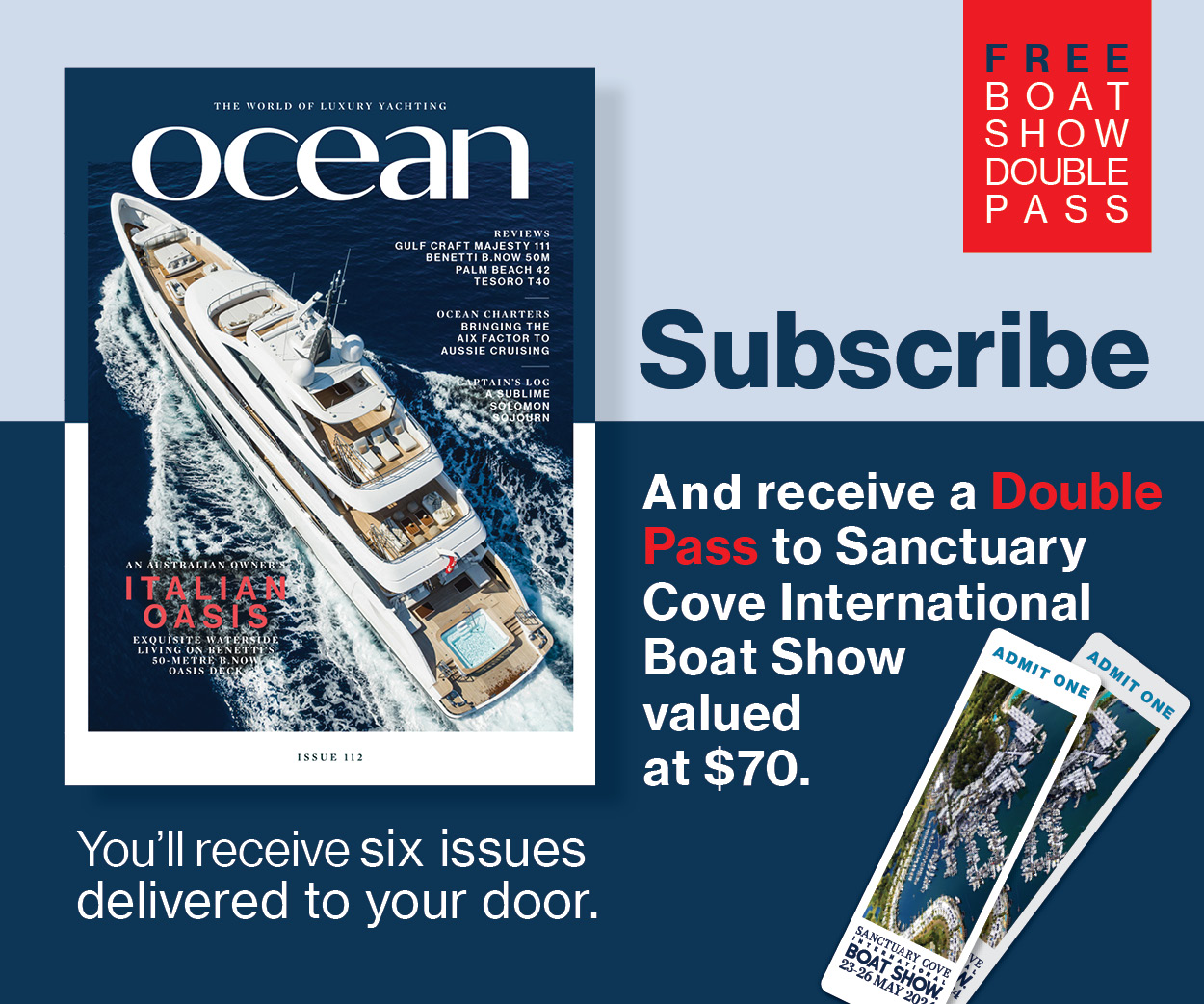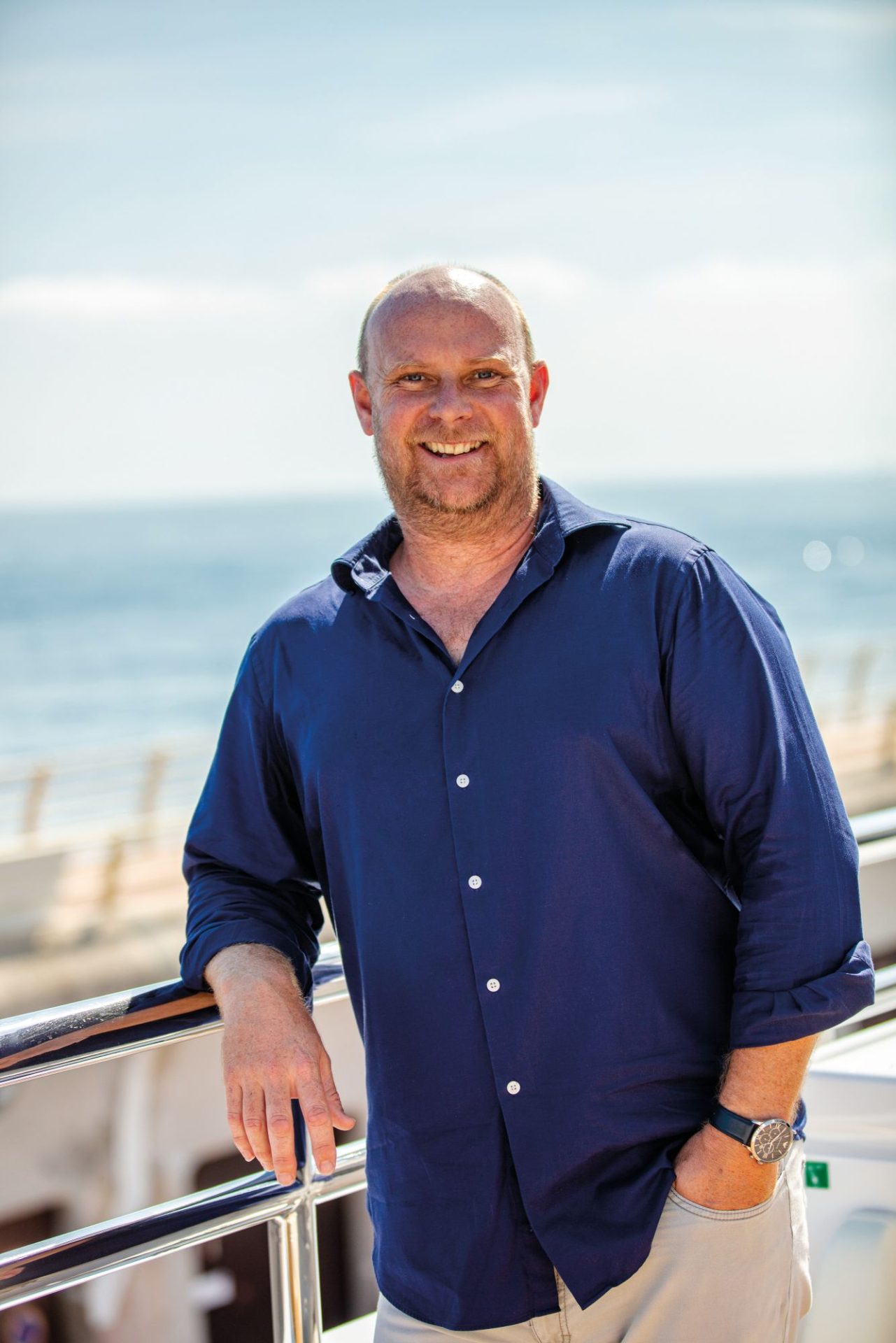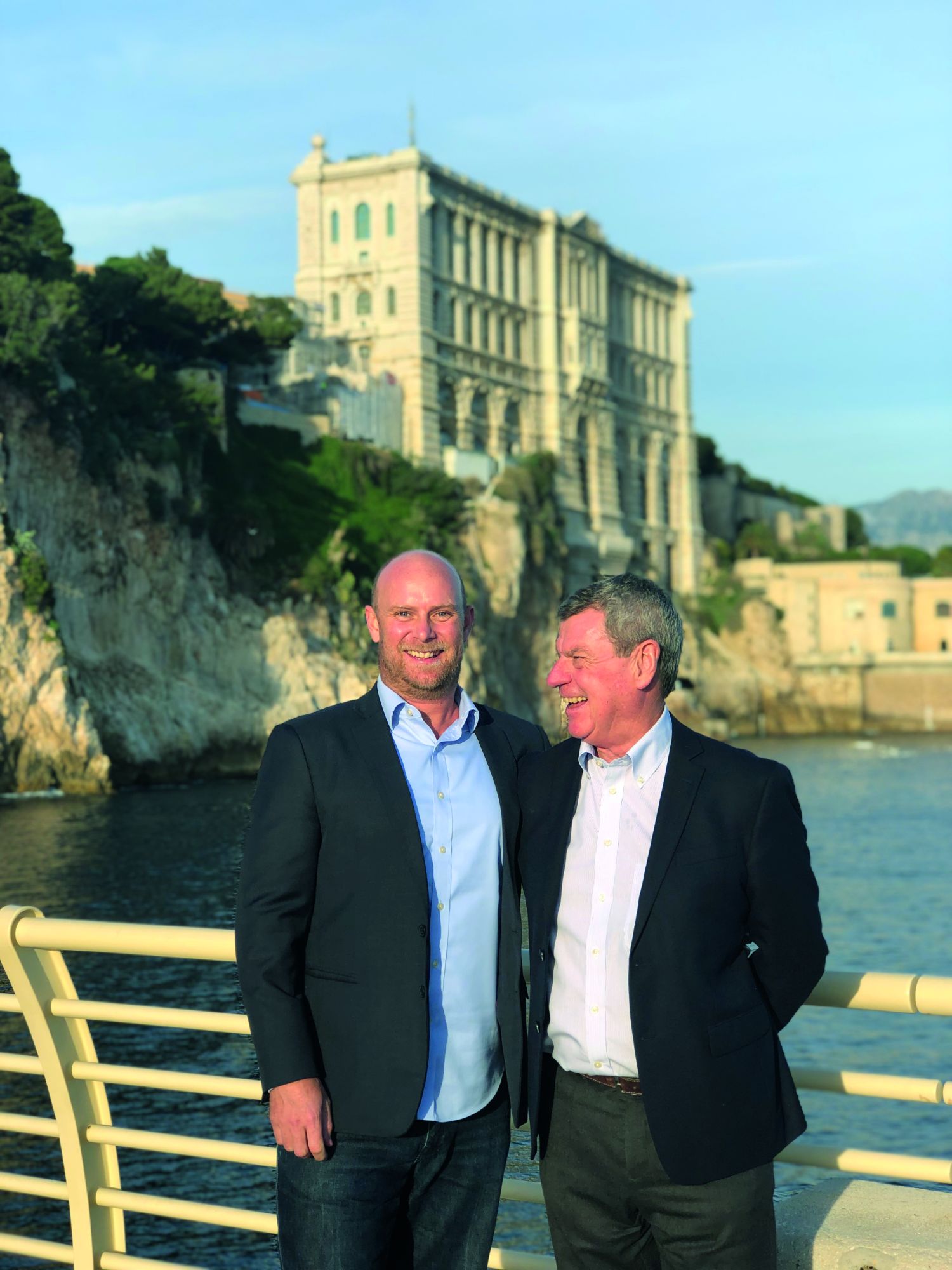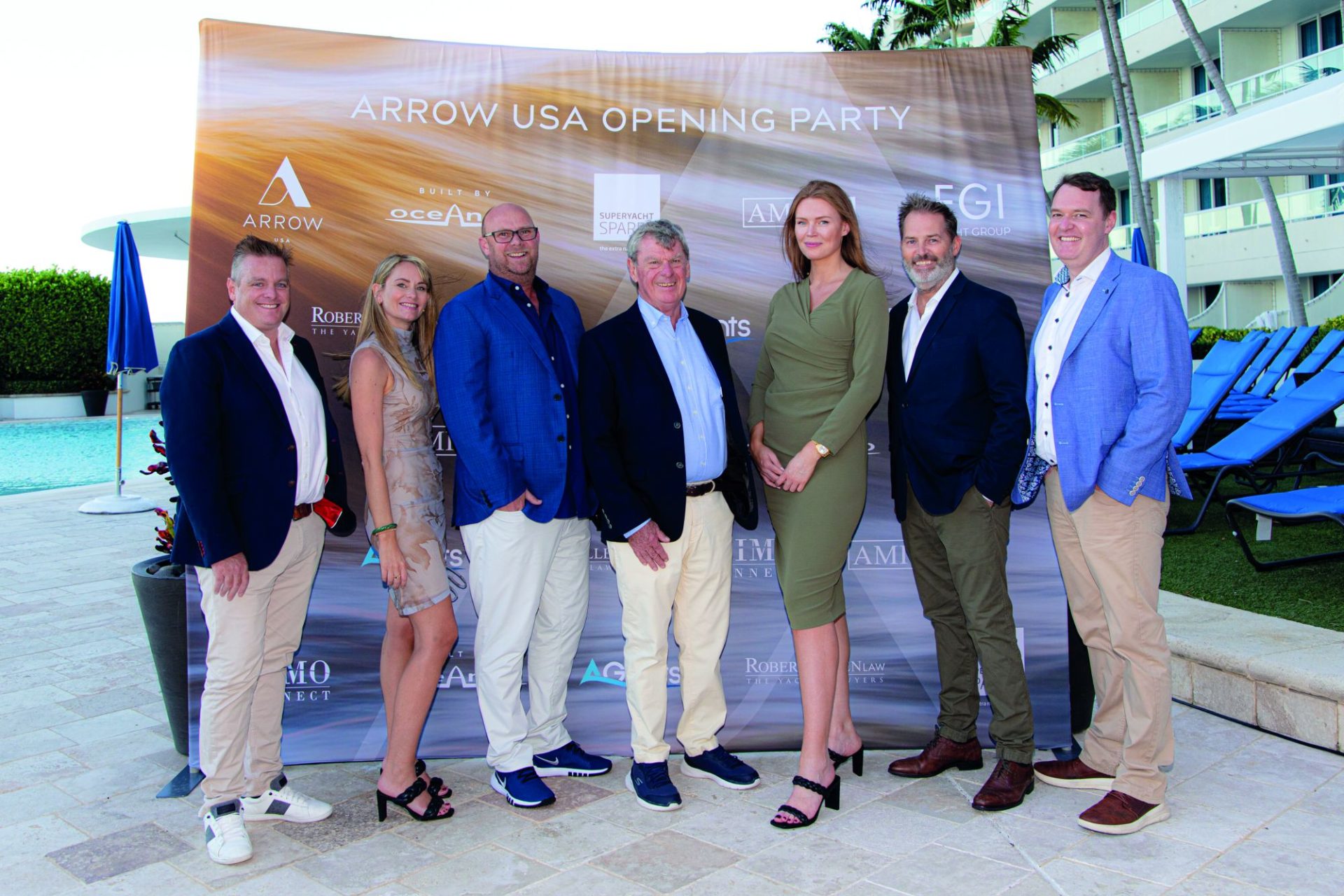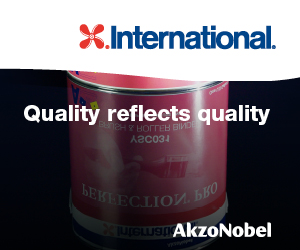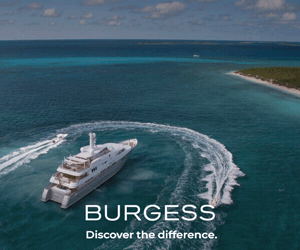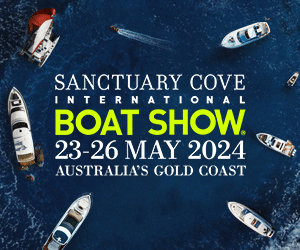Expat files
A lifetime spent on yachts proved the perfect preparation for Tassie-born Yerin Hobson’s career as he moved from professional captain to shoreside yacht manager in Monaco and finally to owner of the company he joined in 2007, Arrow Monaco.
26 October 2023
When your dad’s in the trade and you spend your formative years as a liveaboard on the family yacht, it’s perhaps inevitable you’ll end up working in the yacht industry.
For Yerin Hobson, carrying that passion into ever-larger yachts and then making the move shoreside into yacht management was a natural progression. In July this year, Hobson finally realised a plan he’d discussed 20 years ago with friend and business owner Paul Archer, founder of Arrow Monaco – taking over ownership of the business.
In Hobson’s time with the company, he has seen Arrow Monaco go with the ebb and flow, from a boutique yacht management operation pre-GFC to a major international player covering operational, new-build and refit management, surveys and technical 3D-scanning of yachts up to 100 metres and over.
Key to Arrow Monaco’s success, says Hobson, has been the people they’ve employed, the ethos they’ve stuck to, the inimitable Australian character and the skills that come from sailing.
Ocean magazine: You grew up on yachts – was it a natural progression for you to go professional?
Yerin Hobson: After I was born, I moved straight onto a yacht with my family. We spent 10 years in the South Pacific, and then a couple of years in Tasmania. I went out on my own at 15 and got my tickets – my father is a captain engineer, so I guess I didn’t have much choice!
The first boat I was captain on was Ragamuffin, and I worked on various sailing yachts up to 50 metres before moving into shoreside management of motor boats and sailing yachts. I originally came to Europe for professional racing, doing the Rolex Fastnet and other races.
What inspired you to make the move ashore?
From professional racing, I fell into the white boat side and loved it. In 2003 I met Paul Archer, who had founded Arrow Monaco in 1997, and he said that when I was ready to move ashore, we should talk – and we continued those discussions.
Although being a captain is great and I saw a lot of the world, it wasn’t enough to keep my mind active, so in 2007 I joined Paul as part of the team in Monaco. My main motivation, and my main focus, was career-driven.
What was crewing like in those early days, and how many Australians were in the superyacht scene?
The best people on board had a background in sailing, and Australians were some of the best crew we had. That’s largely down to the art of sailing – you always have to be thinking ahead. Most of our crew were Australian, and were definitely our preference because they were hard-working with a can-do attitude.
Were many Australians moving shoreside when you made the transition, and did you ever consider returning to Australia?
I was 27 when I moved ashore, and it was rare back then to make that choice, certainly for people around that age. You did see it more often in people in their 50s or 60s – they realised that being on the water wasn’t forever!
It was always intended that I would take over the company when Paul neared retirement, and it’s good to know that a plan that was initiated 20 years ago has come to fruition as I now take over the reins.
Maybe one day we’ll go back to Australia, but from a career point of view, I always knew I’d be sailing and building and refitting yachts. At the time, there just wasn’t enough happening in Australia, but it has certainly grown significantly since and is an area of interest with many Australian clients.
There does seem to be an increasing awareness in Australia of the need to nurture talent in the industry – what else have you noticed from afar?
If you go back 15 years, there were only two or three boats over 50 metres owned by Australians and very few were kept in Australia.
Now, Australians are listed in the top 10 for ownership by nationality, so it’s growing, and there are a lot of good ambassadors in Australia who are trying to get yachting off the ground. The real problem has always been the ability to charter.
This has now changed in Australia, but Indonesia, Thailand, Singapore and Cambodia need to follow suit because it’s a long way to go from the Northern Hemisphere if you’ve only got one jurisdiction you can charter in.
Unfortunately, the America’s Cup was during COVID, which was very frustrating – nine boats from the Arrow Monaco fleet were heading to New Zealand for the Cup until it was cancelled.
The Olympics in Brisbane is another opportunity – three of our yachts are already confirmed, which is really exciting. The more boats that can head Down Under, the more things will improve.
What was your role when you first started at Arrow Monaco, and how has that role and the company changed over time?
When I joined in 2007, it was a team of six people, and I initially came in as a yacht manager. Then, in 2008, the global financial crisis kicked in, which impacted the company quite heavily, but it also taught us how to change working practices and re-emerge in a stronger position. It was during that time that I moved into the technical director role, which I held for six years before becoming CEO three years ago.
My role has changed and concentrates on new business development and management of the greatly expanded Arrow Monaco team. Initially, it was quite slow to grow the business, offering purely yacht management.
As I had a technical background, we decided to push technical and refit, and new-build. That allowed the yacht management division to grow organically, as every time we built a boat it came into our management fleet.
Because we were trying to build a brand name, we were able to keep our independence – we still don’t do any brokerage or charter, and there are no commissions across the board.
As we started to grow, the banks began to request services because we didn’t have any conflicting interests. We had been following our clients’ requests and weren’t trying to profit from brokerage, for example, so things really started to take off around five years ago when we branched into survey and prepurchase survey.
We now have around 30 employees, and we have 26 yachts under operational management. There are 17 under new-build management and six under refit management, encompassing yachts all the way up to 100 metres.
Does the addition of the technical side excite you?
Yes, it does, and it’s possibly why Arrow Monaco’s technical side has been so strong – building, planning and refitting is where my passion lies.
Also, over the past few years in particular, we’ve hand-picked some really good people. The hardest part of Arrow Monaco’s success has been finding those people, but we now have them in place. Our technical director is a Class 1 engineer, for example, and is one of the smartest people I know.
The challenges and opportunities during COVID had a strong influence, but the post-pandemic demand happened at the same time as we opened an office in the US, which was fortuitous because the demand filled that void very quickly.
The market is not without its challenges, however – prices are very inflated in new-build right now, although not in terms of management fees. People are still buying and building boats, but it must start to slow down at some point. We’re fortunate because all of the 17 yachts currently in build will come into our management division.
We have really good organic growth planned over the next five years, and don’t plan to expand much more than that. We have a large office in Monaco and a similar-sized one in Fort Lauderdale, so we’re slowly and organically moving our American clients over from the Monaco office.
With our current order books, within five years, both offices will be quite full both in terms of staff and the number of yachts.
After that, we want to consolidate and make sure we’re giving the best we possibly can – we want to be a company that’s in demand from clients rather than reaching out and offering services to every person we can find. We’d like to deliver an even higher level of service, have a high retention of clients, and repeat new builds.
We also have 12 nationalities on the team, speaking 18 different languages, and we have a policy of responding to every captain and client within two hours – that work ethic has been one of the biggest reasons for our success.
What are Arrow Monaco’s key unique selling propositions?
Being independent and staying in our lane is one of the big reasons Arrow Monaco stands out – we haven’t tried to be all things to all people; we just stick to what we’re good at. Also, our success is thanks to the people we’ve hired along the way. And, as mentioned, the Australian sailing culture is really important.
Most of our heads of departments are sailors from sailing yachts, not motor boats, which has definitely contributed to the practical attitude in the office. And then there’s our reputation. We do a lot of work for the Bank of America and private banks all over the world.
They trust us to only deliver what’s in our scope and not step out of it, and that has probably also appealed to clients – after all, if a big bank like Bank of America is willing to entrust hundreds of millions worth of yachts into our care and our supervision of construction, then clients should feel comfortable we know what we’re doing.
What stage are you at in taking over the business?
I’ve been focusing on the final buy-out, which we concluded at the end of July 2023, so I now officially own the company. Paul will still be Chairman of the Board and remains our sounding board and one of my closest friends in the world.
Do you have a family, and do you get back to Australia and Tasmania very often?
My wife is German-Brazilian and studied in Australia, and we have a young son who is two-and-a-half. We live in Monaco, and I already have my first picture of him aboard a yacht. It’s on the classic sailing yacht Cambria, and he’s standing behind the helm looking as if he’s trimming the sails, even though he’s in port!
My mother, father, sister and niece all still live in Australia. I don’t get back as much as I’d like, and haven’t been back since before the pandemic, but will be going back later this year.


